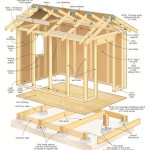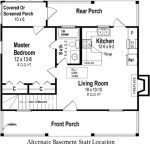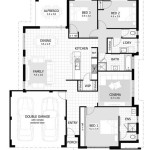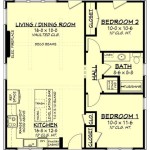Build Your Own Barndominium Floor Plans: A Comprehensive Guide
Barndominiums, a fusion of barn and condominium living, have gained significant popularity as a cost-effective and customizable housing option. The key to a successful barndominium project lies in a well-designed floor plan that maximizes space, functionality, and aesthetic appeal. Constructing one's own floor plan allows for personalized living spaces tailored to specific needs and preferences. This guide outlines the essential steps, considerations, and resources involved in creating custom barndominium floor plans.
The initial phase of planning involves a thorough assessment of individual requirements and desired features. This entails defining the number of bedrooms and bathrooms, determining the purpose of each space (e.g., home office, gym, workshop), and considering any accessibility needs. Furthermore, lifestyle considerations, such as entertaining frequency, hobby preferences, and the presence of pets, should inform the design process. A detailed list of priorities will provide a crucial foundation for subsequent planning stages.
Understanding local building codes and zoning regulations is paramount before embarking on any construction project. Contacting the local planning department is essential to ascertain permissible building sizes, setback requirements, height restrictions, and any specific zoning regulations that might apply to barndominiums. Compliance with these regulations is not only legally mandated but also prevents costly modifications later in the construction process. Ignoring these rules can lead to fines, delays, or even the denial of occupancy permits.
Key Point 1: Defining Your Space Needs and Lifestyle
The foundation of a successful barndominium floor plan stems from a clear understanding of how the space will be utilized. This involves more than simply listing the number of rooms required. It requires a detailed analysis of lifestyle, habits, and future needs. For instance, a family with young children might prioritize a large, open-concept living area for play and interaction, while a retired couple might prefer a focus on single-level living and dedicated hobby spaces.
Consider the flow of traffic within the home. How will family members move from one area to another? Where should the kitchen be located in relation to the dining and living areas? Efficient traffic flow enhances the overall livability of the space and minimizes congestion. Likewise, the orientation of the building on the property should be considered. How will sunlight enter the various rooms? Which rooms will benefit from morning light, and which should be shielded from the afternoon sun to minimize heat gain?
Furthermore, think about storage needs. Barndominiums often offer ample space, but inadequate storage can quickly lead to clutter. Plan for dedicated storage areas for seasonal items, tools, and other belongings. Consider built-in storage solutions such as shelving, cabinets, and closets to maximize space utilization. The ability to adapt the floor plan to future needs should also be factored in. Can the space be easily modified to accommodate a growing family, aging parents, or changing work requirements?
Accessibility is another crucial factor. If anyone in the household has mobility issues, the floor plan should incorporate features such as wide doorways, ramps, and accessible bathrooms. Even if accessibility is not currently a concern, planning for future needs is a prudent approach.
Key Point 2: Utilizing Design Tools and Resources
With a defined set of needs and requirements, the next step involves translating those ideas into a tangible floor plan. Several resources and tools can assist in this process, ranging from simple sketching to professional software. Initially, creating rough sketches of different layout options can help visualize the space and explore various configurations. This allows for experimentation and identification of potential problems before committing to a specific design.
Graph paper can be a useful tool for creating more detailed sketches, allowing for accurate measurements and proportions. Online floor plan tools and software offer a more advanced approach, enabling the creation of 2D and 3D models. These tools often include features such as drag-and-drop functionality, pre-designed room templates, and the ability to visualize furniture placement. Popular software options include SketchUp, AutoCAD, and Chief Architect. Some of these programs offer free trials or basic versions, allowing users to experiment before committing to a paid subscription.
In addition to software, numerous online resources provide inspiration and guidance for barndominium floor plans. Websites and blogs dedicated to barndominium living often feature example floor plans, design tips, and advice from experienced builders and homeowners. Visiting open houses and touring existing barndominiums can also provide valuable insights into different layouts and design features. Consider consulting with an architect or designer, especially for complex or unconventional designs. A professional can help ensure that the floor plan is structurally sound, complies with building codes, and maximizes the potential of the space.
Remember to account for the placement of essential systems such as plumbing, electrical wiring, and HVAC. The location of these systems can significantly impact the layout of the rooms and the overall cost of construction. Consider the placement of windows and doors to optimize natural light and ventilation. Adequate natural light can enhance the livability of the space and reduce energy consumption.
Key Point 3: Structural Considerations and Material Selection
Barndominium construction typically involves a metal building frame, which offers durability and cost-effectiveness. When designing the floor plan, it is crucial to consider the structural integrity of the building and the impact of the layout on the load-bearing capacity of the frame. Working with a structural engineer is highly recommended to ensure that the design is structurally sound and meets all applicable building codes.
The choice of materials for the interior walls, flooring, and finishes will significantly impact the aesthetics and functionality of the space. Consider durable and low-maintenance materials that can withstand the demands of rural living. Concrete floors are a popular choice for barndominiums, offering durability, thermal mass, and a modern aesthetic. Other flooring options include hardwood, tile, and laminate. The selection of wall materials should consider insulation, soundproofing, and ease of maintenance.
Insulation is a critical aspect of barndominium construction, especially in climates with extreme temperatures. Adequate insulation can significantly reduce energy consumption and improve the comfort of the living space. Consider using high-quality insulation materials such as spray foam, fiberglass, or cellulose. Proper ventilation is also essential to prevent moisture buildup and maintain indoor air quality.
Think about the exterior of the barndominium. The design of the exterior should complement the surrounding landscape and reflect the overall aesthetic of the building. Consider adding features such as porches, patios, and decks to extend the living space and create outdoor gathering areas. Landscaping can also enhance the curb appeal of the barndominium and create a more inviting environment. The placement of utilities, such as septic tanks and well systems, should be carefully considered to minimize disruption to the landscape and ensure easy access for maintenance.
Finally, ensure all dimensions and specifications on the floor plan are clear and accurate. This includes wall thicknesses, door and window sizes, and the location of electrical outlets and plumbing fixtures. Inaccurate plans can lead to costly mistakes during construction and delays in the project timeline. Thoroughly review the plans with the builder and any relevant subcontractors to ensure everyone is on the same page. This proactive approach can help prevent misunderstandings and ensure a smooth and successful construction process.
Beyond the three key points above, consider the integration of smart home technology into the floor plan. Pre-wiring for smart lighting, security systems, and automated climate control can enhance convenience and energy efficiency. Think about the long-term maintenance requirements of the barndominium. Choose materials and finishes that are easy to clean and maintain, and design the floor plan to allow for easy access to utilities and mechanical systems. Regular maintenance will help ensure that the barndominium remains in good condition for years to come.
Designing a barndominium floor plan is a complex process that requires careful planning and attention to detail. By thoroughly assessing individual needs, understanding local building codes, and utilizing available design tools, aspiring barndominium owners can create custom living spaces that are both functional and aesthetically pleasing. Consulting with professionals such as architects, engineers, and builders can provide valuable expertise and ensure a successful construction project. A well-designed floor plan is the cornerstone of a comfortable and fulfilling barndominium living experience.

Create Your Dream Home Now Planner5d

Easy Barndominium Floor Plans Cad Pro

Easy Barndominium Floor Plans Cad Pro

Barndominium Floor Plans Stock Custom

Barndominium Floor Plans Stock Custom

Custom Design And Sketch Tips Barndominium Floor Plans

Barndominium Floor Plans

Barndominium Floor Plans The Barndo Co

The Lauren Iii Barndominium Company

Best Open Concept Barndominium Floor Plans That Maximize Space And Functionality








